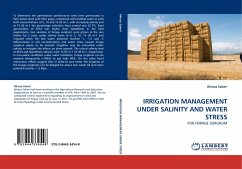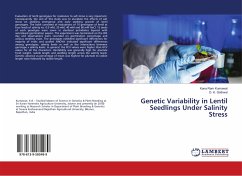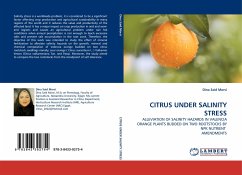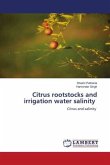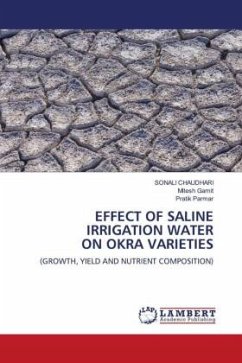To determine the germination performance seed were germinated in Petri dishes lined with filter paper, moistened with distilled water or with NaCl concentrations of 5, 10 and 15 dS m-1. with increasing salinity and at 15 dS m-1 the percentage reduction from control was 32.7%. Seed germination of KFS4 was higher than Speedfeed. In the field experiments, two varieties of forage sorghum were grown in the rain shelter for 2 years under salinity levels of 0, 5, 10, 15 dS m-1 and irrigated when the leaf water potential reached -1, -1.5 and -2 MPa.Increase in salt concentrations and water stress caused forage sorghum plants to be stunted. Irrigation may be intensified under salinity to mitigate the effects on plant growth. The critical salinity level of KFS4 and Speedfeed cultivars were 15 dS m-1 10 dS m-1, respectively. In non-saline conditions under water limitation, forage sorghum can be watered infrequently (-2MPa) to get high WUE. On the other hand interaction, effects suggest that, in order to save water, the irrigation of the forage sorghums can be delayed for about two weeks till leaf water potential reaches -1.5 Mpa.

